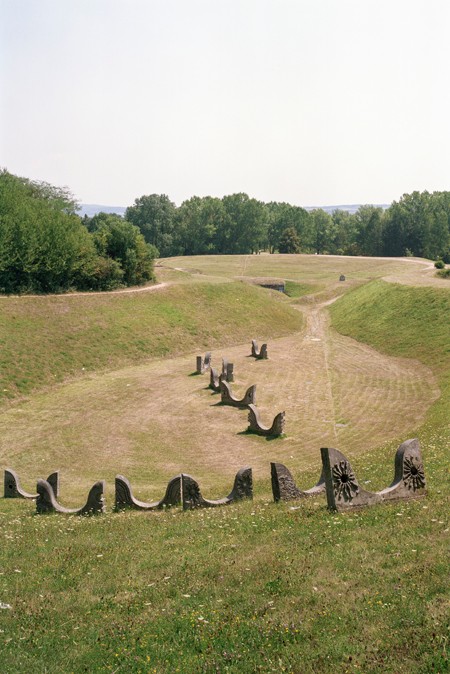The oeuvre of the Serbian-Yugoslav architect, writer, professor, and one-time mayor of Belgrade Bogdan Bogdanović (1922–2010) fits many of the often contradictory definitions of postmodernist architecture and art. Scattered all over former Yugoslavia, Bogdanović’s memorials to the victims of fascist persecution expanded the field of architecture along lines very similar to those Rosalind Krauss theorized in her influential essay “Sculpture in the Expanded Field” (1979). The monuments, cemeteries, mausoleums, memorial parks, necropolises, cenotaphs, and other sites of memory he designed during the 1960s and 1970s blurred the disciplinary boundaries between architecture, landscape, and sculpture in a variety of ways. Some of them are best defined as land art
If Bogdanović’s oeuvre should be labeled postmodernist, however,
it belongs to a strain entirely unto itself: populist but not commercial, in search of archetypes but not typology, and embracing ornament but not favoring any particular “language.” In addition, such a designation would force us to fundamentally reconsider the existing theorizations of the relationship between postmodernism and society: rather than a manifestation of the “cultural logic of late capitalism,” as Fredric Jameson famously proposed, postmodernism was, in Bogdanović’s version, an organic product of socialism, and it contributed to legitimating the revolution in a fundamental way. Finally and most importantly, Bogdanović’s intellectual origins are highly unusual for an alleged postmodernist, deeply rooted as they are in the avant-garde methods of surrealism, a movement that had only cursory associations with either postmodernism or architecture.
My research at CASVA formed part of my ongoing project to trace
the theoretical and aesthetic genealogy of Bogdanović’s work and to establish its intersections with the main intellectual currents of his time. Bogdanović was a self-professed surrealist until the end of his life. No scholars so far, however, have taken that claim seriously enough to interpret his work accordingly and to establish what precisely he may have owed to surrealism. In order to do so, I spent most of my time at CASVA reading the movement’s primary sources, focusing especially on the exceptionally active interwar group of Serbian surrealists. Often omitted from international histories, this group and its leader, Marko Ristić—Bogdanović’s “intellectual father”—were in direct contact with André Breton and the Centrale Surréaliste in Paris as early as the mid-1920s. Bogdanović’s father, Milan, a prominent literary critic, also maintained close contacts with the surrealist circle. The Serbians’ own leftist commitments were in fact much stronger than those of their French peers, paving the way for the direct engagement of some of their leading members in Communist politics after the war. It was in this cosmopolitan and heavily politicized atmosphere that Bogdanović grew up.
The early exposure to surrealism determined virtually all of the major themes of Bogdanović’s work: from his fascination with the city and urban life and his dismissal of functionalism to his long-term obsession with anthropology and his persistent engagement with the manifestations of the “outmoded” in modern civilization—a concern that Walter Benjamin found to be one of the defining features of surrealism. (In some of his autobiographical accounts, Bogdanović indeed identified the primary goal of his own work in terms that recall Benjamin’s “profane illumination.”) In this light, his postmodernism does not appear to be “post” at all; rather, it was an organic outgrowth of the historical avant-garde that opposed functionalist modernism all along. If postmodernist architects briefly manifested their own interest in surrealism through the writings of practitioners and theorists such as Rem Koolhaas, Bernard Tschumi, and Anthony Vidler, it was in the shape of the historical “rediscovery” of what was already
